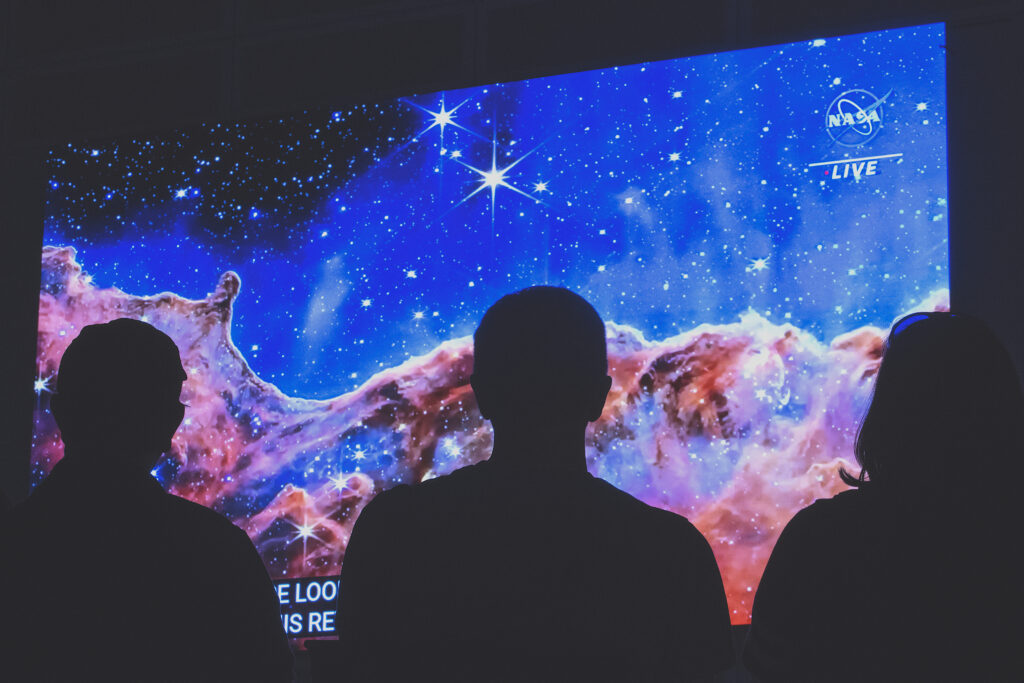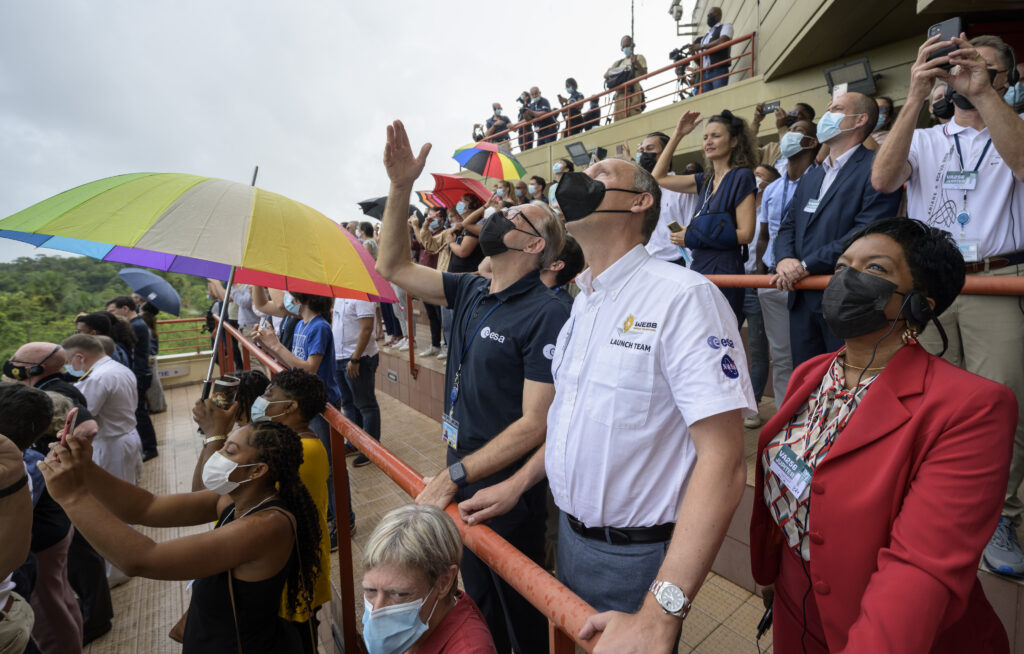Picturing the Deep Universe Is Deeply Human
In July 2022, U.S. President Joe Biden unveiled “Webb’s First Deep Field,” a sparkling color image of a distant galaxy cluster as it appeared 4.6 billion years ago. The magnitude and scale captured by the image stretched the limits of human imagination, evoking the majesty of a boundless universe filled with countless stars and planets.
Since then, the images taken by the infrared camera of the James Webb Space Telescope have continued to enthrall people from around the world. The pictures—many of which have gone viral—are a testament to the grandeur of outer space itself.
But telescopes and other visual technologies are also human inventions that are arguably as marvelous as the images they produce. The JWST is a 30-year, US$10 billion project of the U.S. National Aeronautics and Space Administration (NASA) in partnership with the European Space Agency and the Canadian Space Agency. Reporters, scientists, and interested observers have emphasized JWST’s impressive engineering, which has produced the sharpest images yet of distant celestial objects. “Epic 123-megapixel ‘Pillars of Creation’ Image Is Webb Telescope’s Best Yet,” proclaims one headline. “Jaw-Dropping New 122 Megapixel Webb Telescope Images Reveal Hottest, Most Massive Stars Known,” reads another.
It would seem, indeed, that the JWST is a telescope fit for today’s Instagram generation—a generation that demands ever more powerful visual technologies, from high-megapixel phone cameras to high-definition television screens.
What does this preoccupation with capturing the most high-definition images of outer space say about us? By turning the telescope lens back to Earth, so to speak, we can learn a lot about ourselves and our societies—how we create knowledge about the universe and what we might be missing in the process.
Though many of us tend to think of photographs as “objective” representations of the world, all photographic images are framed, processed, and distributed to some extent by people.
Beyond magnifying the universe, contemporary telescopic imagery in particular requires extensive post-processing that puts most efforts at Photoshop to shame. The anthropologist Götz Hoeppe interviewed an astronomer at an observatory in Chile who described contemporary telescopic images as “reconstructions of digitized information.” In other words, the images are not direct representations of what a person would see with their own eyes.
The images require so much digital manipulation in part because humans can only see light that lies within our “visible spectrum”—that is, electromagnetic waves with wavelengths from 380 to 700 nanometers. Other animals have their own visible spectrum, which means that the night sky can look quite different to them. Biologists hypothesize, for instance, that the Milky Way appears very prominently to dung beetles, who use the celestial formation to navigate at night.
To create images of the universe that humans, as opposed to dung beetles, can see, the JWST’s specialized cameras capture infrared light that is invisible to humans. The black-and-white images that JWST beams back to Earth are then filtered, processed, and stitched together with other data to form the impressive “composite images” that finally find their way to magazines and social media platforms.
Creating the images is no small feat; there’s an entire team of 30 engineers responsible for manipulating and colorizing the images before they are released to the public. And as the European Space Agency’s website for the JWST acknowledges, colorizing these images “is based on aesthetic preference, making this practice both a science and an art.”
Elizabeth Kessler, a scholar of astronomy’s visual culture, identifies specific aspects of the images that appeal to viewers’ sense of beauty beyond just the choice of colors. She suggests, for example, the creators’ use of shadow and light recalls the “the sublime” aesthetic popularized in 19th-century landscape paintings of the American West, which were meant to inspire wonder and awe in viewers. These aesthetic choices further highlight the ways in which imaging space through telescopes such as the JWST can be considered visual art as much as it is astronomical science.
This leads me to another feature of global digital culture that the attention toward beautiful telescopic images shows: the importance placed on seeing itself.
Cultural historians have pointed out that, particularly in the modern West, sight has gained primacy over the senses of hearing, taste, smell, and touch. As the cultural historian Constance Classen puts it: “Modern Western culture is a culture of the eye. We are constantly bombarded, seduced, and shaped by visual models and representations, from maps and graphs to pictures and texts.”
What’s missing from these approaches? Put simply, seeing is not the only way of knowing the universe. Privileging sight above all other senses can exclude people, especially those with visual impairments, and foreclose other possibilities for fully and deeply appreciating the celestial.
Some people have tried to come up with alternatives to visual representations, such as listening through radio telescopes and converting radio waves into audio files, similar to how infrared waves are converted into images. In fact, some musicians are “sonifying” the infrared data from JWST for the benefit of people with blindness or low vision. However, these auditory representations have not attracted as much attention as the images.
Perhaps, at a time of planetary crises, people are also drawn to the JWST images because they project an “elsewhere” that detracts attention from the threats we face closer to home. Anthropologists and others have critiqued how efforts to explore and colonize outer space cater to “escapist fantasies” rather than addressing existing social and political problems.
Read more, from the archives: “Do Black Lives Matter in Outer Space?”
But ultimately, as the anthropologist Lisa Messeri observes, drawing from her ethnography of the contemporary search for exoplanets, “the most prominent legacies of the space age are not prolonged human presence in space and exploration of nearby planets but a new way to observe and study our own planet.”
In other words, even when the telescope is directed toward distant celestial objects, the act of looking out into the universe gives new meaning to being on Earth. The project of visualizing space is inexorably linked with the desire to make sense of humanity and our own planet’s place in the universe. Indeed, since the dawn of the Space Age, images taken from outer space of Earth, such as “Earthrise” by Apollo 8 astronaut William A. Anders in 1968 and “Pale Blue Dot” by Voyager 1 in 1990, have reached iconic status as part of popular culture.
Regardless of what secrets of the universe the JWST images will reveal, the rapt attention paid to them shows how telescopes allow us to peer into humanity as much as they let us gaze into the heavens.





























